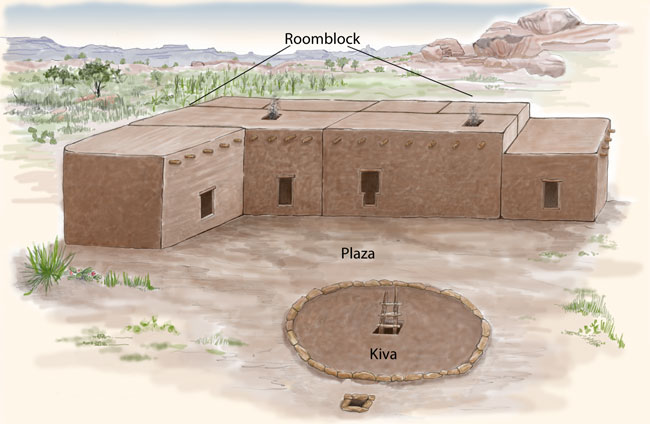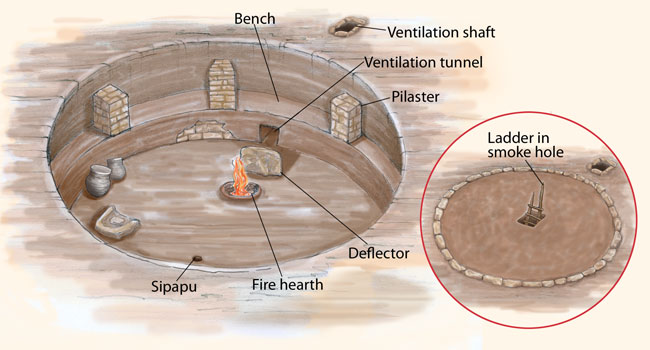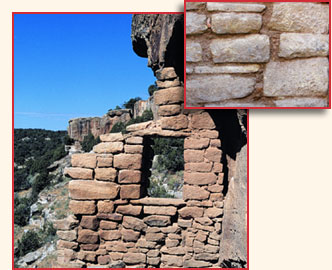Pueblo II Houses

A Pueblo II farmstead. Most families during the Pueblo II period lived on small farmsteads that included a one-story roomblock, a plaza, and a small, underground kiva (pronounced KEE-vuh). These small kivas took the place of the pithouses that were used in earlier times. Kivas were built differently than pithouses. Kivas were round, and their roofs were supported by stone columns instead of wooden posts. These stone columns are called "pilasters." The pilasters were built on top of a bench that curved around the inside edge of the kiva. |
|

A Pueblo II kiva. The small drawing in the red circle, above, shows what a kiva looked like from the outside. The roof was flat, at the same level as the surrounding ground. In the large drawing, the roof has been removed, so you can look inside the kiva. As you can see, kivas did not have wing walls, but they did have deflectors, fire hearths, and sipapus. Kivas were different than great kivas. Kivas were used by individual families. Great kivas were much larger and used by many people for special community events. |
|
 A big change during the Pueblo II period was the use of stone masonry in buildings. Masonry walls were made of blocks of stone stacked on top of one another and held in place with mortar. Often the stone walls were plastered with adobe. Starting during the Pueblo II period, roomblocks and kivas were made of stone masonry. The photographs on the left show what masonry walls look like after the adobe plaster has worn off. The small photo is a close-up, showing mortar between the stones. |
|
|
How do archaeologists know how different structures were used? Archaeologists think roomblocks and kivas were used for everyday living. But that doesn't mean all structures were used for exactly the same things. For example, rooms in the back row of the roomblock were often used for food storage. Other rooms were used for corn grinding, cooking, eating, and sleeping. And kivas were probably where families conducted rituals or ceremonies in addition to everyday activities. |
|
 DONATE TODAY
DONATE TODAY
